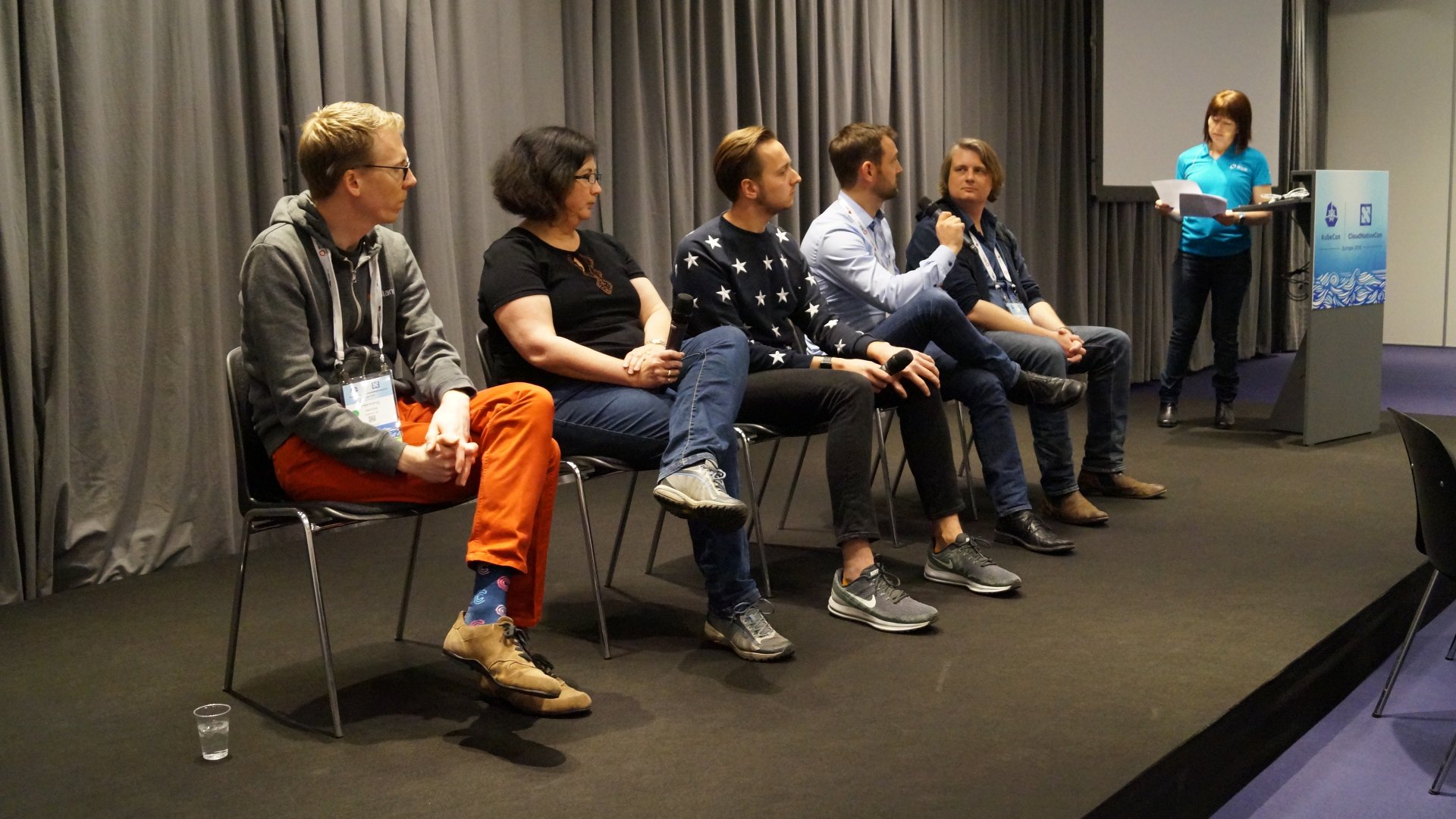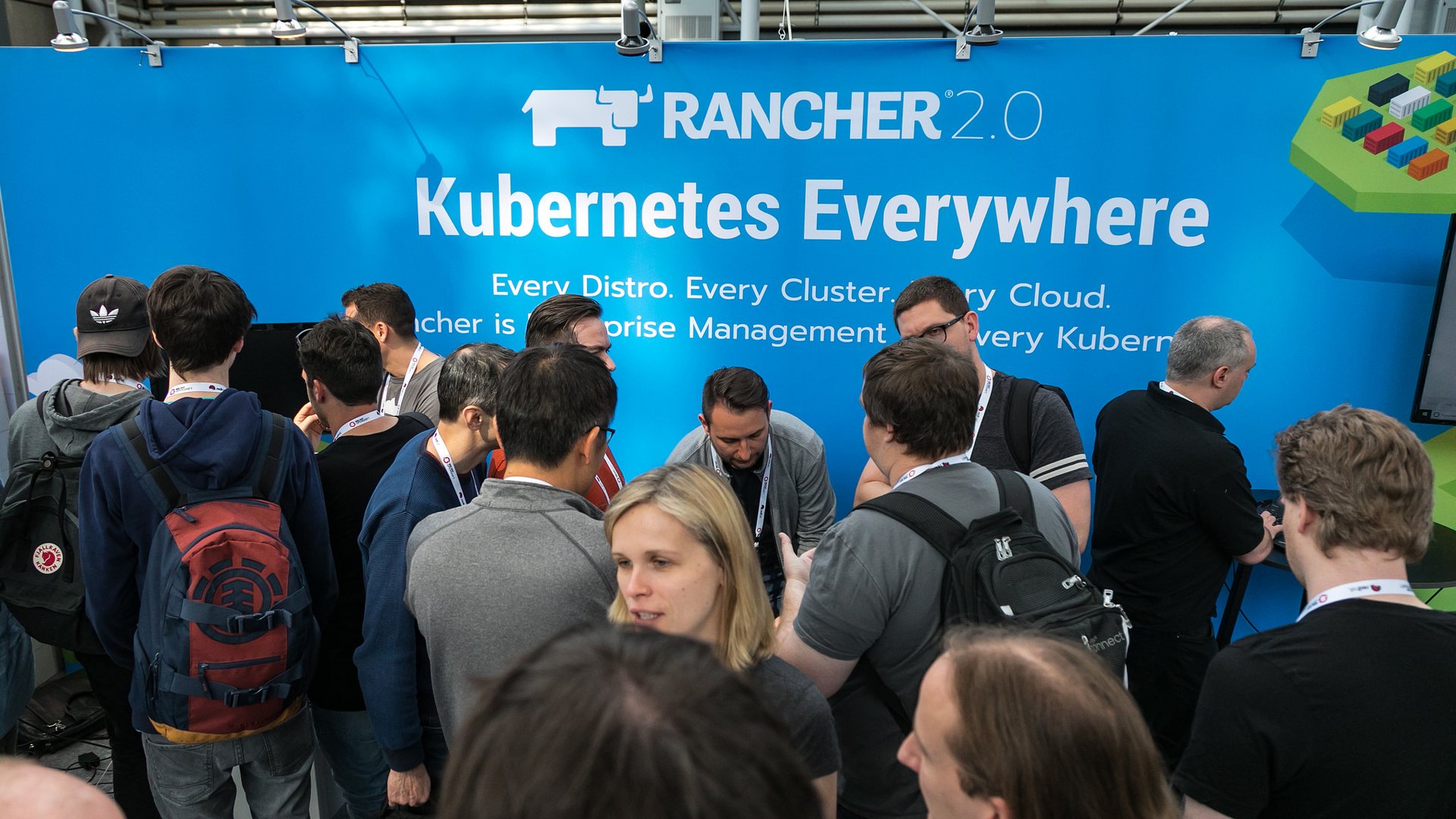Bigger than Linux: The rise of cloud native
A trip to KubeCon + CloudNativeCon reveals a community hard at work building an open, agile and scalable cloud platform to fuel the boom in ubiquitous services
Kubernetes crowned
To say that Kubernetes has had quite a rapid rise is like saying NASA’s Saturn V rocket was quite powerful. Arguably, that rise has a lot to do with the quality engineering that Google offers and the evangelising efforts of community member, Kelsey Hightower.
In March this year, Kubernetes ‘graduated’ from CNCF’s incubation stage, which was an indication that Kubernetes was mature and “resilient enough to manage containers at scale across any industry in companies of all sizes,” according to Chris Aniszczyk, COO of CNCF.
Highlighting the scale of its use, JD.com, the largest retailer in China has over 20,000 servers running Kubernetes and, Kohn says, the largest cluster has over 5,000 servers.
On the showfloor of the Copenhagen event, it was clear that this stamp of maturity also came with a crown as Kubernetes has clearly won the battle to be the container orchestration of choice for developers and vendors alike.
That’s not to say that other products aren’t being used. Chatting to Alex Nehaichik, a software engineer at Wargaming, the online gaming service that runs popular titles such as World of Tanks, he says they are still hedging their bets and using other products, including HashiCorp’s Vault (for secrecy management) and Nomad.
But the reason he’s here is because they are looking into running some of their services on Kubernetes to see how it compares. That’s where a lot of companies are right now, shopping around, doing the research and looking at migration options.

But migration is a non-trivial process. Sarah Wells, Technical Director for Operations and Reliability at the Financial Times, described the FT’s migration as “changing horses in a roaring river” in her keynote. Wells explained how The FT moved from an existing containerised system, stepping it up to Kubernetes, which enabled them to go from 12 to 2,200 releases a year and running 150 microservices. It’s that speed of release that makes the move beneficial for big companies, “When you move from one change a week to many changes a day,” says CNCF’s Alexis Richardson. “You get a lot more confidence in how you work, and you can start doing things you didn’t dream of before so it empowers you to innovate.” (Sorry, not sorry, Kelsey.)
Sign up to the TechRadar Pro newsletter to get all the top news, opinion, features and guidance your business needs to succeed!
It’s also saved money for the FT. Wells says while It was a risk and EC2 costs were higher while they ran old and new systems in parallel, the FT has seen an 80% reduction in EC2 costs since the migration and being more stable, her team have only had two nodes go down in the first month, rather than 17 nodes.
We asked Brandon Philips, CTO of CoreOS, who has been around this industry since the start to explain why this shift has occurred so quickly. CoreOS was acquired by Red Hat to bolster its OpenShift, Red Hat’s Platform as a Service.
Philips was at the event to talk about its new Operator Framework, which is another example of a new product making it easier to build against and extend Kubernetes for applications. Prior to Kubernetes and containerisation, Philips says “You got a whiteboard and drew out your thing: here’s the web server and here’s the database. After that you’d write a bunch of Bash scripts, source some Linux packages and wire stuff together and the thing that you’ve drawn on the whiteboard no longer exists; it’s translated into a bunch of scripts and recipes that you’ve followed and that gets modified over time.”
However, it’s now possible to translate that diagram directly into an API: “You say this is going to be a deployment, this is a service and I’m going to tie them together with this metadata and you tell Kubernetes this is what I want and the system just makes it happen,” says Philips. “This is quite a shift for businesses, because, back in the day, you’d say I want a VM and you’d be given your SSH credentials [...] but now you just deploy the app and the app appears.”
This is the shift that has caused cloud to be so popular,” says CoreOS’ CTO, “because developers are empowered. The big reason that this thing,” Philips told us, pointing around at the bustling show floor at KubeCon, ”is taking off so quickly is bringing that to open source and bringing it in a way that people can design an application to be API-driven as well. The cloud only said, here are the nouns that are API driven: databases, caches, load-balancers. With Kubernetes it’s anything that you find important to your business.”
As an example of Kubernetes pervasiveness, Rancher Labs, was demonstrating its new Rancher 2.0 enterprise platform, which CEO Sheng Liang says “is 100% built on Kubernetes now”. Going forward, he and many other other vendors, expect Kubernetes to become entrenched as infrastructure: “We will worry less and less about it,” says Liang. “And be interested in building stuff on top.”

Liang believes that Kubernetes is going to be so successful that all infrastructure providers, such as Google Cloud, Amazon Cloud, Azure Cloud, even VMware, will support Kubernetes out of the box: ”I think the point has already come, at least for the clouds. All the major clouds have announced a shift of support for Kubernetes as a Service. Amazon hasn’t publicly released it yet, but they’ve announced that they’re adding it in private beta. They announced it last November as the EKS service.”
To ram that message home the CNCF has also announced a new Kubernetes for Developers course and certified exam.
According to Dan Kohn, executive director at the CNCF, there are now 55 Kubernetes distributions and implementations. Being able to gain better observation of Kubernetes was a key issue last year and Prometheus, which is used for monitoring, Kohn says, is being assessed currently to see whether it’s ready to join Kubernetes graduation status while fluentd, used for logging, is the next likely candidate after that.
Current page: Kubernetes on point
Prev Page The rise of cloud native Next Page Better interfaces, security & on rampChris Thornett is the Technology Content Manager at onebite, editor, writer and freelance tech journalist covering Linux and open source. Former editor of Linux User and Developer magazine.
